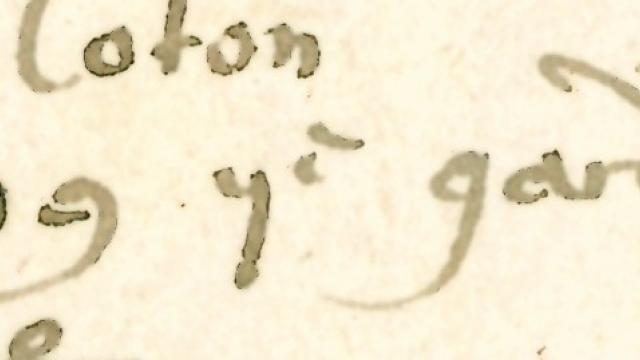
As Spring has now arrived, the 1st March being the first day of meteorological Spring, it seems timely to look at the records of the College gardens in the Archive. The College garden of the early 17th centry is believed to have been found in what is today the south-west corner of Main Court, the area just outside Old Lodge and C Staircase. The Hammond map of 1592 appears to show a garden in this area; and in 1622 we know there was a dovehouse as the accounts show it needed mending! The account books of the College allow us to glean a little more detail about the garden, though whether the plants of St. Catharine's were typical of Colleges at that time it cannot be known for certain.

Reference: L/26, page 38
The first entry details the cost, 14 shillings, for a new seat in the garden in 1626-27. The gardens were clearly seen as a place for Fellows to go and sit and contemplate. This fits well with Woodlark's vision of a College where Fellows would confine themselves to philosophy and theology.

Reference: L/26, page 59
Further evidence of building works in the garden can be seen in 1630-31, where timber for 'railes' in the garden is supplied for 2 pounds, 12 shillings and 10 pence.

Reference: L/26, page 123
In 1638-39, the accounts give us the first reference to plants, in this case hooks for 'sweete briar', believed to be a variety of rose. We can also see that the College had a bowling green as it needed to be mowed. It is thought the bowling green was put in in 1637, on what is now the West end of the Chapel. The earliest refence to a bowling green in Cambridge is in the archives of Queens' College in 1609-10, when 'a bord to set at the end of the bouling alley' is charged for.

Reference: L/26, page 144
In 1640-41, the gardener was reimbursed to the tune of 6 shillings for 'rosemary sweetbriers and worke'. Rosemary would have been a popular plant to grow, not just for its pleasant look and aroma in the garden but also for medicinal purposes. It was believed to help improve memory and was often buned to purify the air. Rosemary was also thought to offer some protection against the plague.

Reference: L/26, page 177
In 1646-47, Bell (presumably the College gardener) is paid 7 shillings and 7 pence for dressing the garden and the Court-trees. Unfortunately we do not know which variety of trees were growing in the Court, but their presence is interesting in itself. Also that year, the gardener was paid to weed the garden and walks, for which he received 3 shillings and 6 pence.

Reference: L/26, page 178
References:
'The Architectural History of the University of Cambridge and the Colleges of Cambridge and Eton' by the late Robert Willis, with additions and annotations by John Willis Clark, 1886 (Volumes II, III and IV)
The Green Spaces of King's, gardens at King's College Cambridge, http://www.kings.cam.ac.uk/archive-centre/archive-month/june-2010.html


